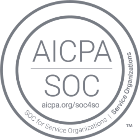Federal agencies across the U.S. are bringing employees back to the office—but the systems meant to support that return aren’t keeping up. Most of the workplace management tools in place were built for a different era, before hybrid schedules, shared desks, and evolving security needs became the norm.
The result? Agencies are struggling to answer some basic questions: Who’s coming in? When? Where will they sit? It’s nearly impossible to plan space, enforce RTO policies, or support employees when the tools meant to handle it weren’t built for how work actually happens.
Today, government organizations need workplace technology that can flex with different work patterns, simplify space planning, and ensure everything stays secure, compliant, and efficient—because that’s the industry standard.
Let’s dig a little deeper into what that really means (and what it takes to get it right).
TL;DR:
- Many government agencies are using outdated workplace tools that can’t support hybrid work or return-to-office demands.
- Legacy systems drain IT budgets and lack the flexibility, integration, and usability modern agencies need.
- Security and compliance requirements are stricter in government, making off-the-shelf commercial platforms a poor fit.
- Government workplaces manage a wide range of resources, all with complex booking rules and layered access controls.
- Procurement cycles are long and highly regulated, so workplace tech must support transparency, documentation, and phased rollouts.
- Good workplace systems must balance strict policies with a user-friendly experience to retain talent and keep operations running smoothly.
- Integration-ready platforms help reduce IT burden, streamline workflows, and improve data accuracy across tools and departments.
Scalability is key—agencies need solutions that can start small and expand over time without disruption or costly overhauls. - Platforms like YAROOMS bring together flexibility, security, and long-term viability—making them well-suited for the realities of government work.
The Public Sector Tech Puzzle: Complex Requirements, Rigid Systems
Managing government workplaces comes with unique challenges that go beyond what most private sector organizations face. The requirements are stricter, the stakes are higher, and the systems in place are often less flexible.
It’s not just about red tape—it’s about finding the right balance between public accountability, operational efficiency, and strict security standards. In these environments, security isn’t just a feature but a fundamental mandate.
Legacy Infrastructure Meets Modern Demands
Many government agencies still use workplace systems built 15 to 20 years ago—long before hybrid work, hot desking, or mobile access were part of the picture. Legacy platforms like on-premise facility management systems or early-generation scheduling tools (think static Outlook calendars or homegrown booking software) often lack the flexibility, integration, and real-time data needed to support today’s dynamic work environments.
What's more, a significant portion of the federal IT budget—between 60% and 80%—goes toward keeping these aging systems operational, leaving less funding available for innovation or modernization.

High-Stakes Security and Compliance
Government workplace technology has to meet strict security and compliance standards like FISMA, NIST 800-53, FedRAMP, and CMMC. Unlike commercial solutions, these systems can’t be deployed unless they meet these requirements from the start.
On top of that, the growing use of a zero-trust security model means every access request, even from internal systems, has to be verified and monitored. This puts extra pressure on workplace management platforms to maintain top-notch security without making the system difficult to use.
Complex Resource Management with Layered Access
Government facilities manage desks, meeting rooms, secure areas, specialized equipment, vehicles, training spaces, and sensitive materials. Each resource has its own set of rules for booking, approval, and access based on roles, clearances, and departments.
The challenge? Managing all these complexities with outdated tools. For instance, a single conference room in some government buildings might require five different permission levels depending on the meeting. Legacy systems often can’t handle situations like this, forcing staff to rely on workarounds like spreadsheets and email chains. This leads to inefficiencies and security risks—issues that demand smarter, more flexible technology.
Procurement Processes That Demand Transparency
The government procurement process adds unique challenges to adopting workplace management technology. RFPs can take months to prepare, competitive bidding periods are lengthy, and implementation timelines are much longer than what commercial organizations typically experience.
The average technology procurement cycle for government entities is 22 months, significantly longer than the 6 to 7 months observed in other sectors. Thorough security reviews, multiple stakeholder approvals, and alignment with budget cycles are the key reasons behind this extended process. With every dollar spent facing public scrutiny, there’s added pressure for clear ROI and transparent reporting on technology investments—making the best procurement platform a critical asset for public sector efficiency and accountability.
Policy-Driven but People-Centric
Government workplace policies are set at multiple levels—executive orders, agency-specific rules, and department guidelines—creating a complex environment that technology must help navigate. Behind these policies are real people with the same workplace needs as in any other organization: functional spaces, efficient booking tools, and intuitive interfaces.
The challenge lies in designing systems that balance these competing demands—policies that meet organizational needs while addressing employee preferences without causing frustration or inefficiency.
When technology systems fail to meet employee needs, it hampers productivity and can lead to talent loss. In today’s competitive job market, government agencies can’t afford systems that make everyday tasks harder.
The Federal Return-to-Office Mandate: A Stress Test for Government Workplace Tech
Now, let's quickly go over the latest developments—they're having a significant effect on workplace technology in government, too.
The January 2025 directive required federal employees to return to their physical duty stations "as soon as practicable," with deadlines set for March 10th for those within 50 miles of their offices. This sudden shift canceled existing telework agreements and quickly became a stress test for government workplace management systems not designed for such rapid transitions.
So, what are the key challenges? First, technology systems must adapt quickly to manage complex tasks like scheduling, booking, and space management. Agencies must figure out who's returning, which spaces are available, and how to manage staggered schedules for teams that have gotten used to remote work.
The phased implementation adds another layer of complexity. Agencies need tailored strategies for employees within commuting distance and those working from farther away. Each phase brings new hurdles—ensuring compliance or reconfiguring office spaces that had been downsized during the telework period.

Solution Design: What Government Workplaces Really Need
After examining the complex challenges in government workplace management, it’s clear that legacy solutions often fall short. However, these challenges aren’t impossible to overcome—they simply require a more thoughtful approach to technology design that addresses the unique needs of government agency operations.
Integration-Ready Platforms
Standalone workplace management systems are no longer effective for government organizations. Modern solutions must serve as integration hubs, connecting seamlessly with existing systems—from physical security to HR databases to budget management tools.
The ability to integrate multiple systems is critical for efficiency and compliance. For example, government agencies must ensure systems like room booking, security access control, and clearance databases work together. Additionally, integrating with primary communication platforms like Microsoft Teams is vital. Without these connections, data must be manually reconciled, which is inefficient and creates potential security risks.
Role-Based Access and Granular Control
Government organizations operate with highly structured role definitions and strict information access requirements. Workplace management technology must reflect these structures, offering granular control over access that goes well beyond basic user types.
True role-based systems need to accommodate the multi-dimensional nature of government permissions. Access permissions are not just based on job title but also depend on factors like department, security clearance level, specific project assignments, and the facilities an employee is visiting. Commercial systems that only offer basic "admin" and "user" roles cannot handle this complexity. The technology must manage these intersecting parameters without overwhelming administrators.
Hybrid-Ready Functionality
Despite return-to-office mandates, the reality of government work is likely to remain hybrid for many agencies. Even with in-office requirements, employees will still move between buildings, work from satellite offices, or participate in cross-agency projects that require flexible arrangements.
To support this, workplace technology must be hybrid-ready. It should provide consistent experiences for employees, whether working at headquarters, regional offices, or remote locations while ensuring appropriate security controls are in place.
The most effective hybrid-ready solutions for government operations recognize the unique challenges of hybrid work. This includes ensuring visibility and consistency across environments with features like hybrid work calendars, integrated scheduling, and secure document sharing.
Transparent Procurement
Government procurement processes require exceptional transparency and documentation. Workplace management technology must support this by creating auditable trails of resource requests, approvals, usage, and expenses—ensuring that oversight bodies can easily access records and that systems are ready for potential audits.
The right solution serves as both a facilitator and a safeguard—streamlining legitimate procurement processes while providing strong protections against misuse. This balance improves efficiency in government operations, enabling faster and more accurate documentation without compromising accountability or regulatory compliance.
YAROOMS: Purpose-Built for Government Requirements
Now that we've covered the key features and needs of government workplace management, let's look at a real tool that fits well within this context: YAROOMS. It's a comprehensive workplace management platform for space and resource booking, hybrid work scheduling, and visitor management.
While many solutions claim to meet government needs, YAROOMS stands out by balancing security and usability—two essential elements for government operations.
Security Architecture and Compliance
YAROOMS prioritizes security to ensure your data is safe and compliant with global standards. Hosted on Microsoft Azure in multiple regions, including North Virginia, the Netherlands, and Toronto, the platform ensures reliable performance while meeting local data protection requirements.
Key security features include:
- Encrypted Data Transfer: All data is encrypted using SSL/TLS 1.2+ protocols, protecting sensitive information while in transit.
- Secure Access: Access is only possible via HTTPS, which always ensures secure, encrypted connections.
- Certifications: YAROOMS holds ISO 27001, ISO 27701, ISO 9001, ISO 14001, and SOC2 Type 2 certifications, verifying compliance with industry-leading data security and privacy practices.
For government agencies, YAROOMS offers a secure, compliant solution that aligns with strict regulations and helps ensure the safety of sensitive information.
Flexible Space & Resource Management
The platform provides flexible resource management for desks, parking spaces, meeting rooms, and other workplace resources. Employees can easily book resources, check availability, and search for specific spaces or equipment as needed.
Key features include:
- Space & Resource Booking: Desks, parking spaces, meeting rooms, and other resources can be easily reserved.
- Configurable Properties: Customizable settings let agencies assign specific properties to spaces and resources, such as type, capacity, and features, making it easier to search and select the right resource.
- Granular User Permissions: Set detailed user permissions to control access and ensure only authorized individuals can book or modify resources.
This flexibility is essential for government agencies to make the most of their workspaces, especially during the return-to-office (RTO) process. It helps ensure that spaces are used efficiently, avoiding wasted resources, and aligns with internal policies.

Integration Ecosystem
Integrations are crucial in how workplace technology fits into the bigger picture of government operations. YAROOMS is built to connect easily with the systems agencies already rely on—whether for communication, identity management, or internal workflows. Instead of creating another standalone tool, it becomes part of an existing ecosystem, helping everything work better together.
Some of the most popular YAROOMS integrations include Microsoft Teams, Zoom, Google Meet for seamless meeting scheduling, and identity providers like Azure AD, Okta, and OneLogin for secure single sign-on and user management.
For government organizations, this means less time juggling disconnected platforms and fewer manual processes to patch the gaps. It makes implementation smoother, reduces strain on IT teams, and supports consistent, secure user experiences across departments.

Support for Long-Term Government Planning
Government technology investments often span multiple years and must adapt to changing needs. YAROOMS is designed with this long-term perspective in mind. Its architecture allows agencies to start small—such as with essential space management—and gradually add more functionality like visitor management or hybrid work scheduling as needs evolve and budgets allow.
This flexible, phased approach aligns well with government procurement and budgeting cycles. Instead of committing to a full-scale deployment upfront, organizations can roll out core features first and expand later—avoiding disruption while ensuring the platform continues to meet operational demands as it grows. It’s a scalable strategy supporting immediate priorities and long-term digital transformation goals.
The Bottom Line
Government workplace management is at a pivotal moment. The push to return to physical offices, the rise of hybrid work, and the strain of aging infrastructure have all exposed the limits of traditional systems. The result isn't just operational friction but a growing need for smarter, more adaptable technology to meet modern government work's realities.
Some agencies already show what's possible when the right tools are in place. What sets these successes apart isn't just the technology itself but how well it fits into the broader ecosystem—secure by design, integrated with existing systems, and flexible enough to roll out in phases aligned with procurement cycles and evolving needs.
As agencies plan their next steps, it's no longer just about checking off feature lists. It's about choosing solutions built to handle the unique complexities of the public sector. That means looking for platforms that can meet strict compliance requirements, integrate easily, and scale over time.
The government workplace of the future will need to balance control with adaptability—secure enough to meet regulatory demands but flexible enough to support modern ways of working. Getting there will take more than retrofitted commercial tools. It will require technology designed with the government in mind—solutions that support both the mission and the people behind it.


.png)









